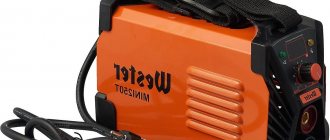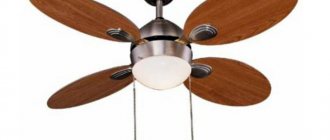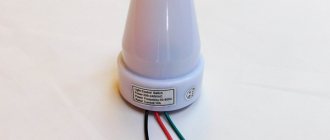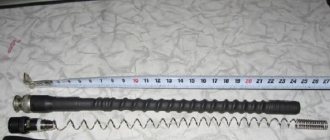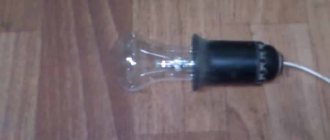Why do you need to make a converter for a 3-phase electric motor yourself, and how to make it yourself? To protect the environment, rules are being created everywhere that recommend that manufacturers of electrical devices make products that will save electrical energy. This can often be achieved by properly controlling the speed of the electric motor. A frequency converter easily solves this problem.
A frequency converter of an electric motor with three phases is called differently: inverter, frequency current changer, frequency-controlled drive mechanism. Today, such devices are made by various factories, but many craftsmen make no worse ones with their own hands.
How I made my own frequency converter
I made a frequency converter and an asynchronous drive for my friend. He needed a drive for the sawmill, powerful and good. Since I loved working with electronics, I immediately offered him the following circuit:
I used a three-phase bridge on transistors with feedback diodes that were available. The control was carried out through the HCPL 3120 optodriver with a PIC16F628A microcontroller. I soldered a quenching capacitance at the entrance so that the electrolytes were charged smoothly. Then I soldered the shunt relay. I also installed a current protection trigger against short circuit and overload. For control I installed two buttons and a switch for reverse rotation.
I assembled the power part using a wall-mounted installation.
I connected the resistors in parallel at 270 kOhm using gate pass capacitors and soldered them behind the board. My board is shown in the external view:
View of this board of mine from the other side:
To connect the supply voltage, I assembled a power supply that operates on pulses, flyback. Here is a diagram of this power supply:
How did I program the microcontroller? Simple blinkers did not pose any problem for me. The result was constants in the form of a matrix, which my controller worked on. The frequency and voltage were specified by these values. I checked the entire operation scheme on a low-power fan motor, 200 W. My design looked like this:
Initial experiments gave good results. Then I modified the program. I revved up the 4 kW engine and went to assemble the sawmill controls.
During installation, my friend and I accidentally had a short circuit and the protection was triggered; we checked its operation. The 2 kW 1500 rpm motor sawed boards with ease. Now the program is still being finalized to boost the engine above its nominal value. Characteristics: frequency from 2 to 50 hertz in steps of 1.5 hertz, synchronous frequency, constantly changing, run-up from 1500 to 3500 hertz, scalar type U/F control, motor power up to 5 kW.
Hold down the RUN button and accelerate the engine. Let go, the frequency remains at the same level. When the LED lights up, the drive is ready to start.
Connection and setup
To connect a frequency converter, a general diagram for connecting an asynchronous electric motor. In the circuit, the converter is located immediately after the differential circuit breaker, designed for a current equal to the motor rating. When installing the converter in a three-phase network, you must use a three-phase machine with a common lever. This allows you to turn off all power at once if an overload occurs in one of the phases. The trip value must be selected in accordance with the current of one phase of the motor. And in a situation where the frequency converter is installed in a network with single-phase current, it is advisable to use an automatic machine designed for a triple phase value. One way or another, installation of the device must be done manually, without “cutting” into the “zero” gap and grounding.
In fact, setting up the inverter consists of choosing the scheme for connecting the phase wires to the terminals on the electric motor, but it often depends on what type of network they are connected to. For three-phase electrical networks at production facilities, the motor is connected as a “star” - this scheme provides for parallel connection of the winding wires. For household single-phase networks with a voltage of 220V, a “triangle” circuit is used (note that the output current should not exceed the nominal value by more than 50%).
The control panel should be located in any place that is most convenient for use. Its connection diagram is indicated in the technical documentation for the frequency converter. Before installation and before power is applied, the lever should be set to the off position. After moving the lever to the on position, the corresponding light indicator should light up. By default, you press the RUN key to start the device. To gradually increase engine speed, you need to slowly turn the remote control handle. When rotating in reverse, switch the mode using the reverse button. Now you can set the handle to the position that sets the required rotation speed. Please note that on the control panels of some frequency converters, instead of the mechanical speed, the frequency of the supply voltage is indicated.
How to make an inverter yourself?
Along with the production of factory inverters, amateurs make them themselves, with their own hands. There is nothing complicated here. Such a frequency converter converts one phase and turns it into three phases. An electric motor with a similar frequency range is used at home; its power will not be lost.
The rectification block in the circuit is located at the beginning. Next come filters that cut off current variables. To manufacture these inverters, IGBT transistors are used.
Thyristors are the future, although they have been used in the present for a long time. A purchased frequency switch based on bipolar transistors is expensive and is rarely used (servo drives, metal-cutting machines with vector control). These drives, such as conveyors and conveyors, rotary machines, water pumping stations, climate control systems - this is a large part of the entire use of plant devices, where it is better to use frequency drives to control electric motors with squirrel-cage armatures and you can control engine speed by applying potential by changing the frequency up to 50 hertz.
Let us give simple examples of frequency converters that pulled powerful electric motors of diesel locomotives and electric trains, which included many freight platform cars, large stations with 600-volt pumps, providing urban areas with drinking water. Obviously, these strong electric motors are not suitable for bipolar transistors. Therefore, active thyristors of the GTO, GCT, IGCT and SGCT types are used. They convert from direct current to a three-phase current network with good power. However, there are simple circuits using simple thyristors that are closed by the reverse cathode current. Such thyristors will not operate in PWM mode; they are well used in direct control of electric motors, without a constant current. Frequency converters based on thyristors were used for DC motors during stagnant times. Siemens invented vector frequencies that transformed the industry beyond recognition.
The cost of all parts of a homemade inverter is significantly lower than the price of a factory device.
Such homemade devices are well suited for electric motors with a power of up to 0.75 kW.
Control via analog input
The PR6000 frequency converter has two analogue inputs – AI1 and AI2. This sets it apart from other models with one analog input.
Input AI1 can be used for voltage control with an input impedance of 47 kOhm. Input AI2 has a choice, which is made by a switch: current input with an input resistance of 500 Ohms, or voltage input.
What is the inverter intended for - its operating principle
The inverter acts on the rotation speed of asynchronous motors. Motors convert electrical energy into mechanical movement. Rotational movement is converted into mechanical movements. This creates great convenience. Asynchronous motors are very popular in many aspects of people's lives.
The speed of the electric motor can be changed by other devices. But they have many shortcomings. They are difficult to use, expensive, work with poor quality, and the adjustment range is small.
A frequency converter for a three-phase motor easily solves this problem. Everyone knows that using frequency converters to change the rotation speed is the best and most correct method. Such a device provides soft starting and braking, and also controls many processes occurring in the motor. In this case, emergency situations are eliminated.
To smoothly and quickly regulate the operation of the engine, experts have developed a special electrical circuit. The use of a frequency generator makes it possible to operate the engine without interruption, economically. Its efficiency reaches 98%. This occurs by increasing the switching frequency. Mechanical devices cannot perform such functions.
Control via digital inputs
The PR6000 converter has 8 discrete (digital) inputs: FWD (forward/stop), REW (reverse/stop) and 6 inputs DI1…DI6.
The FWD and REW inputs can operate in two- and three-wire mode, with the third wire being programmed on one of the inputs DI1…DI6. The speed control mode selection is set in parameter P077.
Digital inputs DI1...DI6 are multifunctional; they are programmed for different functions, which are launched when the corresponding input is activated.
Possible functions: multi-speed selection, acceleration/deceleration selection, forward/reverse JOG operation, stop control, frequency increase/decrease, fault alarm input, start pause, three-wire start/stop control, DC braking , error/message reset, sweep frequency operation, counter enable/reset/input. In total, you can select up to 20 different parameters, which are set in parameters P071...P076 for each input. Activation of discrete inputs occurs by short-circuiting the desired input to the COM terminal. Moreover, this can be done in different ways - via the controller output, relay contacts, sensor or manual button. The digital and analog inputs are shown below.
How to regulate the speed of an inverter?
How can a frequency generator change the rotation speed of a three-phase electric motor? First, he changes the mains voltage. Next, the required voltage amplitude and frequency are obtained from it and supplied to the electric motor.
The speed control interval run-up by the converter is large. You can change the rotation of the motor in the other direction. To prevent the engine from failing, you need to take into account the data from its characteristics, permissible speed, power.
Serial control
When operating via the RS-485 interface, the frequency converter is controlled by a controller or a personal computer through a special RS-485/RS-232 converter adapter.
Through this interface, the converter can not only receive commands to change parameters and state, but also provide information about its current state to other devices. Also, communication with other converters can be supported via the RS-485 interface.
Next, we’ll talk about methods for operational control of inverter modes.
What does the control drive consist of?
Frequency circuit diagram.
It consists of three parts:
- a rectifier that provides a direct current potential when connected to the electrical network. The network may or may not be managed;
- a filter element that smoothes the output voltage (capacitance is used);
- an inverter that produces the desired frequency potential, the outermost link near the electric motor.
Characteristic
Most common electrically adjustable drives use two classes of inverter frequency converters. The main features of their separation are the structural difference and the operating principle of the power part of the device. The inverter performs its functions with an intermediate node operating with direct current, or there is direct communication with the source.
A positive feature is high efficiency. Returns reach 98.5% or more. Used to control powerful high-voltage drives. The frequency generator is listed as relatively cheap, despite the additional configuration of control circuits. The effective way of its application is evaluated by considering the class, advantages or disadvantages. At first, converters with direct, direct connection to the network were used. (picture 1).
That is, the power source is connected to the stator windings of the motor through open valves. The design of the power part consisted of rectifiers made on semiconductor devices - thyristors.
Possessing the properties of an electric valve. And control systems (CS). Which, opening them alternately, connected the electric motor windings to the network. The voltage is supplied to the thyristors, having a three-phase sinusoidal form Ua, Uв, Uс. The voltage U out is generated at the output of the converter.
This is shown in one phase with a cut strip (Figure 1). Enlarged, it has a jagged appearance, which is approximated by a blue line. The output frequency of the device is within the range of 0-30 Hz. This short range limits the drive's ability to regulate the speed of an induction motor. Such a connection in practice gives a result of one in ten. Although technological processes dictate a significant increase in this ratio.
The use of uncontrolled thyristors is considered a design flaw, since their use requires an improved control system. It becomes more complex. In addition, the “notched” shape of the output voltage (Fig. 2) leads to the appearance of higher harmonics. Their presence is accompanied by additional losses. Which are observed in an increase in overheating of the electric motor, a decrease in torque (torque) on the shaft and the appearance of interference in the network. Therefore, additional installation of parts and assemblies to eliminate these shortcomings increases the cost of the device. They increase its dimensions, weight and reduce drive efficiency.
Currently, converters with direct (direct) coupling are not used. Nowadays the systems additionally include a unit with a DC function. This involves double transformation of electricity. The input voltage, with a constant amplitude, frequency and sinusoid shape, is supplied to the terminals of the rectifier block (B). Next comes a filter (F), which reduces the ripple of higher harmonics. The purpose (I) of the inverter is to convert direct voltage into alternating voltage of variable frequency and amplitude. In this case, separate indoor units are used. The functions of electronic keys, as part of inverters, are performed by lockable GTO thyristors. Or its replaceable types: GCT, IGCT, SGCT, as well as a three-electrode semiconductor element with an insulated gate IGBT.
The advantage of a frequency generator based on thyristors of both classes is the ability to use them at increased voltage and current levels. They can withstand long-term operation and electrical impulse surges. Frequency converters support stable operation over a wide power range. With a plug from hundreds of kW to tens of mW. The voltage at the inverter output ranges from 3 to 10 kV. However, when comparing the price in relation to the power, it remains overpriced.
Variable drive devices, which included turn-off thyristors, occupied a predominant place. But then they were replaced by an IGBT transistor with an insulated gate. The use of a thyristor complicates the control. Being a semiconductor element, it is connected by applying a pulse to an adjustable contact; it is enough to change the polarity of the voltage or reduce the current value close to zero. The complexity of the process and additional elements make the adjustment system more cumbersome.
IGBT transistors are characterized by a simple control method with little energy consumption. A large operating frequency range expands the range of choice of electric motor speeds and increases the speed characteristics. The combined action of the transistor with microprocessor control affects the degree of higher harmonics. In addition, the following features are noted.
- Losses in the windings and magnetic circuit of the electric motor are reduced.
- Warmth heating decreases.
- Minimum manifestations of torque pulsations.
- Rotor jerking in the low-frequency zone is eliminated.
- Losses in capacitors, transformers, and wires are reduced, thereby increasing their service life.
- Measuring and protection devices (especially induction ones) allow fewer inaccuracies and distorted responses.
Comparing inverters of the same output power with other circuits, devices based on IGBT transistors are distinguished by their reliability, smaller dimensions, and weight. This is achieved through the modular design of the hardware. The minimum set of elements that make up the device. Protection against sudden fluctuations in current and voltage. Reducing the number of failures and stops of the electric drive. Better heat dissipation
The high price of low-voltage converters (IGBTs) per unit of output power is explained by the difficulty of manufacturing transistor modules. Considering price and quality, they are preferable to thyristor ones. And we also need to take into account the constant dynamics of reducing the cost of device production. There is a downward trend.
A difficulty in using a high-voltage drive with direct frequency change is the power limitation above two mW. Since an increase in voltage and operating current enlarges the dimensions of the transistor module, a more highly efficient heat sink from the semiconductor is required. And as a way out, before the advent of new bipolar elements, modules in converters are connected in series in several pieces.
Frequency control mode
They are divided into types of engine speed control:
- scalar control (no communication from the reverse side);
- vector control mode (there is or is no connection from the reverse side).
In the first case, the stator with its magnetic field is controlled. Vector control takes into account the action of the rotor and stator magnet fields, improving torque at different rotation speeds. This is the main difference between their control modes.
The vector method is more accurate and efficient. It is more expensive to maintain. It is more suitable for specialists with good professional skills and knowledge. The scalar type control method is the easiest to use. It is used with output parameters that do not require special precision adjustment.
How to choose an inverter before buying it
Before choosing a frequency converter, check the electrical compatibility with the motor and load capacity (power).
Rice. No. 1. Block diagram of the operation of a system of pumping units from a VFD frequency converter.
When operating a frequency converter with one motor, the choice is made depending on the rating characteristics. When choosing, the following indicators are taken into account:
- According to the passport, the power of the inverter and the electric motor must be equal. This parameter is valid when using motors with two pairs of poles (2p=4), with rotation speeds up to 1500 rpm, with constant torque. It also applies to inverters that can cope with an overload of 150% (conveyors, conveyor belts) and for converters operating with an overload of 120% (fans, centrifugal pumps).
- The rated current must be equal to or greater than the continuous actual current consumed by the motor (load current).
The motor acceleration time at a starting current of 150% is 120% for converters specializing in pumping units, from the rated inverter usually should not exceed 60 seconds.
- The input voltage of the network must satisfy the converter; it must maintain its functionality even with any voltage deviations from the norm.
- The frequency regulation range that the inverter can support must satisfy the high-speed mode of the motor.
- The presence of discrete control inputs is necessary for entering various types of commands programmed by the user. Analog ones are also needed; they are used to input task signals and for feedback. Digital inputs are also required for high-frequency signals coming from encorders or digital speed and position sensors.
- A number of output signals are used to create complex circuits for a pumping station system.
- Possibility of operational control in operating mode, these can be control inputs using a remote control. Or control via a serial communication bus via a controller or computer. Maybe it will be combined control.
- The choice of converter depends on the preference for the motor control method, scalar or vector control. Depends on separate vector motor control or scalar control - maintaining one constant ratio of output voltage to output frequency. For pumping units, the vector control method is more typical.
- More precise criteria for choosing a frequency driver include the parameter that determines the operation of the engine at steady speed. When the converter operates with one motor, the required power for starting is calculated by the formula:
Rice. No. 2. Formula for calculating total starting power.
The motor current consumption from the converter at a mains voltage of 220/380V is calculated using the formula:
Rice. No. 3. Calculation of mechanical characteristics of the engine.
Rice. No. 4. A table of inequalities that must be observed when choosing an inverter for operating one frequency drive with several motors.
How to connect an inverter with delta and star?
When we bought an inverter at an inexpensive price, the need arises: connecting it to the electric motor ourselves without specialists. First, you need to install a circuit breaker to de-energize for safety. If a short circuit occurs in the phases, the entire system will shut down.
You can connect the frequency converter to the motor with a star or triangle.
When the regulation drive is with one phase, the contacts of the electric motor are connected in a triangle. Then power will not be lost. The power of this frequency converter will be no more than 3 kW.
Three-phase inverters are technically the most modern. They are powered by factory three-phase networks and connected by a star.
To limit the starting current and reduce the starting torque when starting an electric motor over 5 kW, you can use the delta and star connection method.
When the stator is turned on, a star circuit is used, and if the engine speed is normal, then they switch to the triangle version. But this is used when there is a possibility of connecting in two circuits.
We note that in the star-delta version there will always be large current drops. When switching to the second scheme, the engine speed will decrease significantly. To restore the rotation speed, the current must be increased.
Frequency switches for motors with power up to 8 kW are widely used.
Why do you need a frequency converter
An asynchronous motor is significantly superior to other types of electric machines in performance and power, but is not without characteristic disadvantages. For example, to control the speed of rotation of the rotor, the device must be equipped with additional elements. The same is true with starting - the starting current of an asynchronous motor exceeds the rated value by 5-7 times. Because of this, additional shock loads and energy losses arise, which in total only reduces the operating life of the unit.
To solve these problems, as a result of persistent research, a class of special devices designed for automatic electronic control of inrush currents was created - frequency converters.
A frequency converter for an electric motor reduces the starting current by 4-5 times and not only provides a smooth start, but also controls the rotor by adjusting the voltage and frequency. Using the device has other advantages:
allows you to save up to 50% of electricity during startup; with its help, feedback is provided from adjacent drives.
In fact, this is not a converter, but a three-phase voltage generator of the required magnitude and frequency.
Engine start/stop
Starting and stopping the engine can be done in the following ways.
- From the control panel of the frequency converter. To do this, use the RUN, STOP/RESET buttons. If a short-term start is needed, the JOG button is used.
- By supplying a signal to the discrete inputs FWD, REW with two-wire control. For three-wire control, you need to enable one of the discrete inputs DI1...DI6 and program it accordingly. The mode is selected by parameter P077. Any of these inputs can also be used for pulse triggering (JOG command). With two-wire control, a constant signal is required at the appropriate inputs for the motor to operate. With a three-wire, a short-term signal is sufficient.
- Via a serial interface using commands from the controller. The source of the Start/Stop command in the Prostar PR6000 inverter is selected in parameter P006.
Two wire start/stop control
Three wire start/stop control
Emergency stop of the inverter
In addition to a regular stop, the Stop function with a specified deceleration uses two methods of emergency stopping the engine and turning off the inverter.
- Emergency stop by power interruption. To do this, manufacturers recommend installing a three-phase linear contactor before powering the inverter, the power supply of the coil depends on the state of the emergency circuit of all equipment. When you press the “Emergency Stop” button or in another emergency, the power to the contactor is turned off and the voltage from the inverter is removed. This will ensure that the engine stops.
- The function of discrete input DI1…DI6 “External device fault alarm” is used. If you program the desired input for this function, the inverter will stop if an alarm occurs.
Other useful materials:
Subtleties of setting up a frequency converter FAQ on electric motors Setting up a frequency converter to operate on multiple motors Purpose and types of encoders

